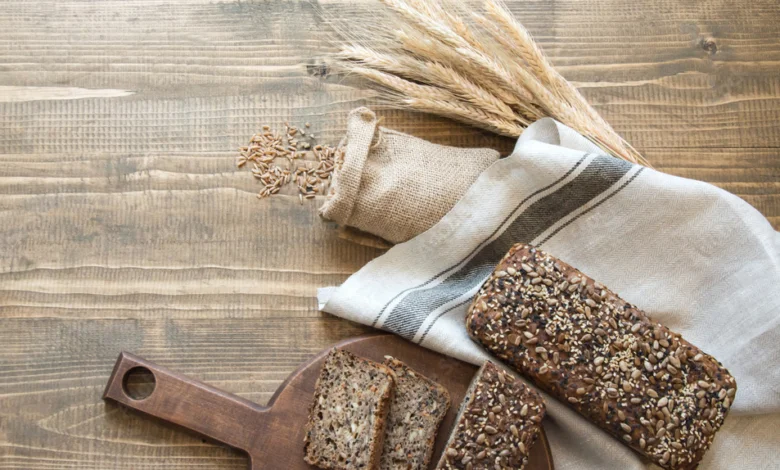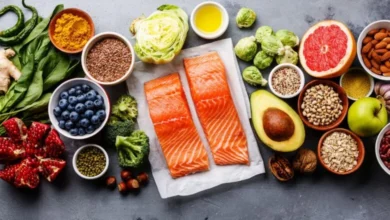Understanding Fitness Bread a Nutritious Revolution in Baking

In recent years a new trend has emerged in the world of health-conscious consumer’s fitness bread. With promises of enhanced nutritional value and healthier ingredients fitness bread has gained traction among those seeking a balance between their love for bread and their commitment to a healthier lifestyle.
What is Fitness Bread?
A specific kind of bread called “fitness bread” often referred to as “health bread” or “protein bread” is made with an emphasis on optimizing nutritional advantages while reducing unfavorable ingredients like refined wheat and added sugars. Usually a combination of nutritious grains, seeds, nuts and occasionallyprotein-rich substances like whey or pea protein are used to make it.
The Ingredients a Nutrient Powerhouse
Whole Grains
Apart from being rich in fiber, vitamins and minerals the whole grains found in fitness bread also offer complex carbohydrates which are great for maintaining steady energy levels throughout the day.
Seeds and Nuts
Nuts like sunflower, chia or almond seeds, flaxseeds, and walnuts are commonly included to fitness bread. These components include essential micronutrients that improve overall health and heart health, such as protein, healthy fats and omega-3 fatty acids.
Protein Boosters
Some varieties of fitness bread may contain added protein sources like whey or plant-based proteins (pea, soy, etc.) appealing to fitness enthusiasts looking to increase their protein intake for muscle repair and growth.
Health Benefits of Fitness Bread
Rich in Fiber
The blend of whole grains and seeds in fitness bread provides a significant amount of dietary fiber. This aids in digestion helps regulate blood sugar levels and promotes a feeling of fullness aiding in weight management.
Lower Glycemic Index
Fitness bread often has a lower glycemic index than regular bread which implies that it impacts blood sugar levels more gradually. This function might be useful for those who need to check their blood sugar or have diabetes.
Enhanced Nutritional Profile
Compared to traditional white bread fitness bread tends to have a more diverse and nutrient-dense profile. It contains a variety of vitamins minerals and antioxidants that contribute to overall health and vitality.
How to Incorporate Fitness Bread into Your Diet
Fitness bread can be enjoyed in various ways:
- Toast:Top it with avocado, nut butter or lean protein like turkey for a satisfying breakfast or snack.
- Sandwiches: Use fitness bread as a healthier alternative for sandwiches, pairing it with fresh veggies and lean proteins.
- Croutons or Bread Crumbs: Cube or grate fitness bread for homemade croutons or breadcrumbs in salads and recipes.
Protein may be found in fitness bread
Fitness Bread offers a nutritional punch in every slice boasting four grams of protein per serving. Packed with high levels of iron and potassium this bread is a powerhouse blend of rye, oat kernels, and wheat germ. What’s impressive is its extended shelf life achieved without any preservatives. Even more noteworthy than its longevity is the mission-driven flavor that resonates with every bite.
Fitness bread is beneficial to you
Delba Fitness Bread is a nutrient-packed bread rich in natural proteins making it an excellent choice for health-conscious individuals. Each slice is power-packed with five grams of protein iron and fiber offering a substantial boost of essential nutrients. Ideal for various purposes whether as a base for sandwiches or a wholesome snack this bread truly stands out. Its delicious taste is enhanced when toasted providing a delightful crunch and aroma. Pair it with freshly cut vegetables for a nutritious sandwich or enjoy it with natural spreads for a flavorful and wholesome snack option.With its high protein content and nutrient-rich profile Delba Fitness Bread is a fantastic choice to incorporate into a balanced diet offering both taste and health benefits.
Good for weight reduction is protein bread
Incorporating high-protein bread into your diet can be advantageous in several ways. By opting for bread with elevated protein content you’re not just satisfying hunger but also enhancing your overall nutrition. Here’s how it can benefit you:
Improved Protein Intake:
High-protein bread offers a significant boost in your daily protein intake. Protein is essential for various bodily functions including repairing tissues, building muscle and supporting a healthy immune system. Choosing this type of bread can contribute significantly to meeting your protein requirements.
Enhanced Blood Sugar Control:
Compared to traditional bread high-protein bread often has a lower glycemic index. This means it causes a slower and steadier increase in blood sugar levels after consumption potentially aiding in better blood sugar control. It can be especially beneficial for individuals managing conditions like diabetes or those aiming to stabilize their energy levels throughout the day.
Weight Management Support:
Protein is known for its satiating effect meaning it helps you feel fuller for longer periods. By opting for high-protein bread you may experience increased satisfaction and reduced cravings which can be beneficial for weight management goals. Additionally higher protein intake can potentially boost metabolism aiding in weight loss or maintenance.

Building Muscle Mass
The development and repair of muscles depend heavily on protein. High-protein bread might be an easy approach to help those who regularly work out or who want to gain muscle achieve their goals. The bread’s higher protein content helps to supply the building blocks required for muscular growth and recuperation. This guarantees that your body gets a wide range of necessary components for optimum health. Seeking guidance from a healthcare professional is essentialor a nutritionist to ensure that the food choices you make suit your particular health goals and requirements. To make sure your nutrition plan is effective for you they could offer you personalized guidance.
Furthermore it is crucial to review the nutritional data and components listed on the bread container. This makes sure that the precise protein amount fits into your diet plans and goals and helps you comprehend it. You can make educated decisions about your nutrition by being conscious of what you put into your body.
Bread without calories
A typical slice of bread purchased from a store usually contains between 100 and 110 calories. Opting for bread with fewer calories around 60 per slice, seems reasonable since finding bread with as few as 40 calories per slice can be challenging. Following the 2020–2025 American dietary guidelines it’s recommended that half of the grains consumed should be whole grains.
Consume bread before working out
Whole grain bread is a powerhouse when it comes to fueling your workouts. Its rich carbohydrate content serves as an excellent source of energy giving you the necessary boost for your exercise regimen. Pairing carbohydrate-rich foods with protein-rich options like cheese, eggs or paneer creates a perfect balance in your intake. This combination delivers a well-rounded mix of fats, proteins and carbohydrates supplying your body with essential nutrients necessary before a workout.Timing matters too. Having a whole grain bread sandwich about 30 to 40 minutes before your exercise routine can be ideal if that fits into your routine. This allows your body enough time to digest the nutrients and convert them into usable energy giving you the stamina required to power through your workout.
Bread is healthy for you
Bread regardless of its type carries a range of nutrients that can significantly enhance one’s diet. Even commonly consumed white bread contains notable levels of essential elements such as protein, calcium, thiamine, manganese, zinc and iron. Alongside these bread also provides significant amounts of fiber and various B vitamins. These nutrients collectively contribute to supporting overall health and well-being when included as part of a balanced diet.
Bread is harmful
When we assess the nutritional value bread falls short in comparison to fruits and vegetables across several important aspects. It carries lower quantities of vital nutrients such as protein, fat, fiber, vitamins and minerals when contrasted with these alternative food categories. This contrast implies that heavily depending on bread could potentially result in a shortage of these fundamental nutrients crucial for overall health and essential bodily functions.Another factor to consider is how bread can affect blood sugar levels. Harvard Health notes that bread tends to have a high glycemic index meaning it can cause rapid spikes in blood sugar levels after consumption. This quick rise and fall in blood sugar can potentially lead to energy crashes and increased hunger which may not be beneficial for those seeking stable energy levels throughout the day.
Moreover certain types of bread may contain significant amounts of added sugars, further exacerbating these blood sugar spikes. Being mindful of these aspects can be important especially for individuals managing conditions like diabetes or those aiming to maintain stable blood sugar levels for overall health.
The Lowest fat bread
Rye bread differs from wheat-based bread in its thickness and weight due to its lower oil and gluten content. Studies suggest that rye bread crafted entirely from rye has the advantage of keeping you feeling full for extended periods. This effect is attributed to its lesser impact on blood sugar levels compared to wheat-based breads.
Conclusion: Is Fitness Bread Worth Trying?
For individuals seeking a healthier bread option without compromising taste and texture fitness bread presents a compelling choice. Its nutrient-packed ingredients and potential health benefits make it a valuable addition to a balanced diet. Incorporating fitness bread can be a step towards a more mindful approach to nutrition and overall well-being.




